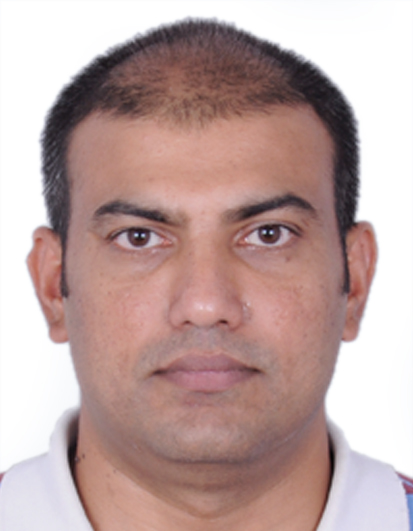Profile
Minhaj Sirajuddin did his PhD at Max-Planck Institute Dortmund, Germany where he determined the crystal structure of the septin complex. At UCSF, San Francisco his postdoctoral work provided biochemical evidence for the tubulin code hypothesis. He returned to India and joined inStem, Bangalore where he established a research program to study cytoskeleton and contractile systems at various organization scales. He is a recipient of the Human-Frontiers Science program postdoctoral Fellowship, DBT/Wellcome Trust India Alliance Intermediate Fellowship, Senior Fellowship, and EMBO Young Investigator Programme award. Minhaj has also created a popular science book and documentary films about forgotten Indian Scientists, found on his lab website. Website: cytoskeleton-lab.org
Current Focus Areas
Current Focus Areas: Principles governing heart myofiber organization: We recently reconstructed the 3D fiber structure of the heart at a micron scale, which revealed new myofiber systems in the heart (Dileep et al 2023). Currently, we addressing the myofiber remodeling events during physiological heart development and disease conditions.
Cytoskeleton & sub-cellular dynamics during sarcomerogenesis: During sarcomere biogenesis (sarcomerogenesis), the complex cellular remodeling process occurs resulting in the ordered tilled array of arrangement of sarcomere. Our lab is working towards capturing the dynamics during sarcomerogenesis using fluorescence time-lapse imaging.
Structure and function of contractile units: Here, we employ cryoEM and in vitro reconstitution to understand the molecular basis of cardiomyopathy disease-causing mutations. In this regard, we have set up a structure determination pipeline with cryoEM and helical reconstruction methods (Kumari et al 2020, and Bangera et al 2023).
Spatial-temporal dynamics of microtubule modifications: A limitation in studying microtubule modifications is the lack of tools to mark them in living cells. We have established a pipeline to generate live cell sensors against tubulin modifications (Kesarwani et al 2020). which will enable us to study their dynamics and cellular functions.
Technology development aiding biotechnology research: A major challenge in undertaking research and development is the heavy reliance on importing reagents from outside India. I am leveraging my expertise to generate in-house reagents, to reduce the cost, indigenize such technology, and boost the bio-economy of India.
Selected Publications
1. Bangera M., Dungdung A., Prabhu S., Sirajuddin M*. (2023) Doublet microtubule inner junction protein FAP20 recruits tubulin to the microtubule lattice. Structure Sep 29: S0969-2126(23)00333-7.
2. Dileep D., Syed T. A., Sloan F.W. T., Dhandapany P.S., Siddiqi K., Sirajuddin M*. (2023) Cardiomyocyte orientation recovery at micron scale reveals long-axis fiber continuum in heart walls. The EMBO Journal e113288 Oct 4;42(19): e113288.
3. Mendon N., Ganie R. A., Kesarwani S., Dileep D., Sasi S., Lama P., Chandra A., Sirajuddin M*. (2023) Nanobody derived using a peptide epitope from the Spike protein receptor-binding motif inhibits entry of SARS-CoV-2 variants J Biol Chem Volume 299, Issue 1, Jan 2023, 102732
5. Kesarwani S., Lama P., Chandra A., Reddy P. P., Jijumon A. S., Bodakuntla S., Rao B. M., Janke C., Das R., Sirajuddin M*. (2020) Genetically encoded live cell sensor for tyrosinated microtubules Journal of Cell Biology. Oct 5;219(10): e201912107.
6. Kumari A., Kesarwani S., Javoor M. G., Vinothkumar K.R., Sirajuddin M*. (2020) Structural insights into filament recognition by commonly used cellular actin markers. The EMBO Journal. Jul 15;39 (14):e104006
